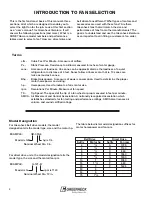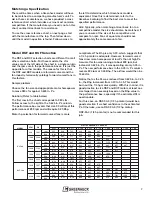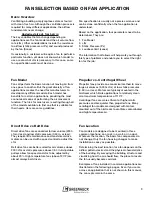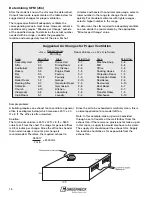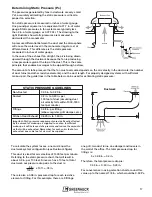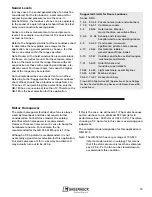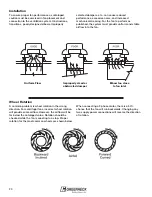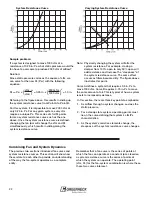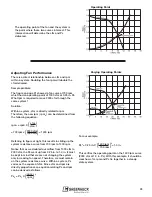
Determining Static Pressure (Ps)
The pressures generated by fans in ductwork are very small.
Yet, accurately estimating the static pressure is critical to
proper fan selection.
Fan static pressure is measured in inches of water gauge.
One pound per square inch is equivalent to 27.7 in. of water
gauge. Static pressures in fan systems are typically less
than 2 in. of water gauge, or 0.072 Psi. The drawing to the
right illustrates how static pressures are measured in
ductwork with a manometer.
A pressure differential between the duct and the atmosphere
will cause the water level in the manometer legs to rest at
different levels. This difference is the static pressure
measured in inches of water gauge.
In the case of the exhaust fan at right, the air is being drawn
upward through the ductwork because the fan is producing
a low pressure region at the top of the duct. This is the same
principle that enables beverages to be sipped through a straw.
The amount of static pressure that the fan must overcome depends on the air velocity in the ductwork, the number
of duct turns (and other resistive elements), and the duct length. For properly designed systems with sufficient
make-up air, the guide lines in the table below can be used for estimating static pressure:
To calculate the system losses, one must know the
ductwork system configuration (see Ductwork figure).
This duct is sized for air velocities of 1400 feet per minute.
Referring to the static pressure chart, that will result in
about 0.3 in. per 100 feet. Since we have 10 feet of total
ductwork, our pressure drop due to the duct is:
.3 in. x 10 ft. = .03 in.
100 ft.
There is also a 0.08 in. pressure drop for each resistive
element or fitting. For this example, there are 5 fittings:
one grill, two duct turns, one damper and louvers in
the wall of the office. The total pressure drop for
fittings is:
5 x 0.08 in. = 0.4 in.
Therefore, the total pressure drop is:
0.03 in. + 0.40 in. = 0.43 in.
For convenience in using selection charts, round this
value up to the nearest 1/8 in., which would be 0.50 Ps.
STATIC PRESSURE GUIDELINES
Non-Ducted
0.05 in. to 0.20 in.
Ducted
0.2 in. to 0.40 in. per
100 feet of duct (assuming duct
air velocity falls within 1000-1800
feet per minute)
Fittings
0.08 in. per fitting
(elbow, register, grill, damper, etc.)
Kitchen Hood Exhaust
0.625 in. to 1.50 in.
Important: Static pressure requirements are significantly affected
by the amount of make-up air supplied to an area. Insufficient
make-up air will increase static pressure and reduce the amount of
air that will be exhausted. Remember, for each cubic foot of air
exhausted, one cubic foot of air must be supplied.
17
Exhaust Fan
Ductwork


